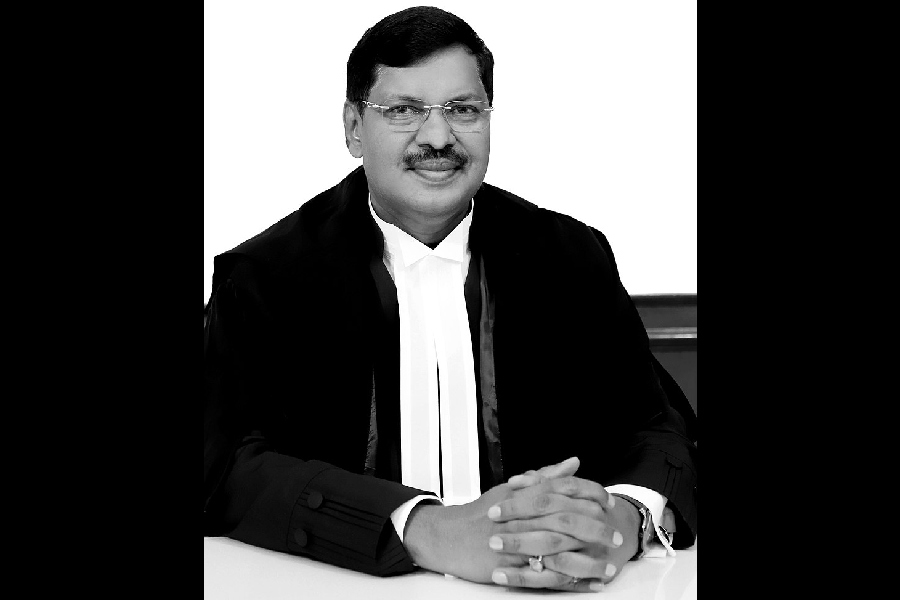 |
Deepak Parekh, the straight-talking chairman of mortgage financier HDFC, believes that the Reserve Bank of India has sent out its clearest signal to date against teaser home loan rates by tightening provisioning norms on Tuesday.
“It’s now up to the banks to decide whether they should persist with the scheme,” says Parekh who has always been critical of the product that offers tantalising rates in the first couple of years and conceals the real repayment burden behind a fog of complex calculations.
In a free-wheeling interview with Saumitra Dasgupta and Piya Singh, Parekh gives his incisive views on a range of topics: from teaser rate home loans to the lack of rationale for a reverse merger; from financial sector reforms to the challenges of creating a slum-free India.
The HDFC chieftain has ruled out the possibility of a reverse merger between HDFC Bank and mortgage financier HDFC — which would have created a monolith which already has a combined sensex weightage of 11.68 per cent, higher than Reliance Industries and the Tata group companies. HDFC had total assets of Rs 1.26 lakh crore as on September 30.
The 66-year-old industry doyen gave up executive responsibilities at HDFC group earlier this year but sees no reason to recast his ageing board of directors.
“Age is an attitude issue. If you participate, contribute, if your mind is active, if you are all there, it does not matter if you are 50 years old or 70 years. We have the benefit of their wisdom and experience,” says Parekh.
Q: What are your thoughts about the monetary policy measures announced on Tuesday?
A: It was necessary to send out a signal that inflation is still not under control. A modest increase of 25 basis points in both the repo and reverse repo was expected…the RBI governor also sent out a signal that this would be the last rate hike for some time because we don’t want very high interest rates in India.
The whole world has very low interest rates compared with India. In Japan and the US, interest rates are nearly zero. Even China’s rates are lower than ours. We need to keep that in mind. We have to tackle inflation in another way. Food inflation is a big concern but with a good monsoon expected, one hopes that the food inflation will come down. On the housing side, the RBI has always been worried about asset bubbles. And that’s why he (RBI governor Duvvuri Subbarao) has increased provisioning norms by two per cent for all teaser rate home loans which are dual rate loans.
Q: Will that signal the end of the teaser rate loans?
A: The RBI cannot micro-manage banks but it does send out signals. Now it’s up to bank managements to decide whether they want to heed that signal. A mortgage financier that has Rs 20,000 crore worth of teaser loans will now have to set aside Rs 400 crore by way of provisioning. They are also concerned about the 10-90 loans. (These are loans where the borrowers stump up 10 per cent upfront and the mortgage financier lends the remaining amount). So, they have increased the loan to value ratio to 80 per cent.
Since these are usually large value loans, they have assigned a higher risk weightage of 125 basis points to loans above Rs 75 lakh. They are welcome measures but I would liked to see one or two more things….Today, flats are being sold without approved plans.
One doesn’t know whether the environmental approval will be given or not. One does not know whether the local municipality will give permissions for 60 or 80 storeys. But the builders sell flats for 80 storeys without the requisite permission. If a plan is approved and the local authority says you have the commencement certificate and that you can build up to 20 storeys, then you ought to sell only up to 20 storeys. You can’t in that situation sell a flat on the 40th floor.
Nowadays, developers pay fancy prices for land and, one week later, they take out full page ads and start bookings. No approvals have been received. It takes up to a year to get all the approvals.
Q: So, what else could the RBI have done?
A: There already is a notification in force that says banks and housing finance companies cannot fund land acquisition. It has been around since 2006. So, they could have said that banks must not finance homes where there are no approvals.
Q: Where do you see HDFC in this scenario?
A: We have one advantage. We were over-provisioning…about Rs 300 crore above the National Housing Bank (NHB) and RBI requirement. That will help us now. Home ownership is going to rise but we need moderate prices. Our business is growing in smaller cities…in Baroda, in Pune, in Coimbatore.
Q: What about the east?
A: The east is slow. Our exposure in the east is around 7 per cent and it’s been at that level for almost 33 years.There is demand in the east…but new builders are not coming up. We need modest housing. Even in areas such as Ultadanga and Rajarhat, flats cost above Rs 1 crore. The government needs to give land at a reasonable price…there is a speculative value in land prices there and the builders are packing in an extra profit margin. If you start getting land on the outskirts of Calcutta at cheaper rates, then we will see uncontrollable demand.
Among other cities, we have active offices in Jamshedpur, Guwahati, Bhubaneswar and Patna. There’s a reasonable business out there but all told it accounts for only 7 per cent of our business.
Q: Would HDFC look to diversify into other asset classes as mortgages get more competitive?
A: The mortgage business has been growing over the past 10 years. We are still growing at 20 to 25 per cent and we are hoping that in the next decade we can keep growing at 25 per cent. We have diversified into practically every area of finance from asset management into banking, life insurance, property funds, and brokerage. HDFC Bank does automobile financing and even gold financing. We don’t need to duplicate our businesses. In the case of SBI and ICICI Bank, there is a historic reason (why they chose to diversify into these areas). We got a banking licence 15 years ago. In our case, the mortgage company was the holding company. But in the other cases, the bank is the holding company. In our case, the NBFC is the holding company of all the investments.
Q: Would you ever consider a reverse merger of HDFC and HDFC Bank?
A: The talk of a reverse merger keeps coming up. But today, both HDFC Bank and the parent, HDFC, are growing rapidly. Both have a healthy topline and bottomline. Both have NPAs that are below one per cent. We don’t have surplus people; we don’t have NPA problems. Both models are working well. Why create a problem through integration? There’s no need for it; no rationale for it.
Q: The RBI put out a discussion paper on new bank licences that proposed a capital base of between Rs 300 crore and Rs 1,000 crore. The guidelines will finally come out in January. But where do you think the capital base should be?
A: We should have Rs 1,000 crore. You must have more capital to protect depositors. In this day and age, Rs 1,000 crore is the minimum paid-up capital that you should start with.
Q: How do you see reforms in the insurance sector panning out?
A: We are waiting for the cap on foreign stake to be raised from 26 per cent to 49 per cent. All the foreign partners are waiting for this. Until then, you can’t increase the stake, and you can’t do an IPO…we are growing both businesses (life and general insurance) but we are waiting anxiously for the government to take a decision on the expansion of foreign equity.
Q: President Barack Obama visits India this week. What are your expectations from this trip?
A: It’s a visit designed to foster relationships. We are the two largest and oldest democracies. India is on the radar of all multinationals. For their growth, their survival and prosperity, they need both India and China. Earlier, it was only China. Now they need India also to sell their goods and their technology. They can help us in the area of education and healthcare.
There is a foreign universities bill pending in Parliament. Once passed, it will allow American universities to set up shop here. Research and development and clean energy are the other big areas (for collaboration). Defence is another important area. India spends a huge amount on defence and a fair amount of that goes to the US. Drug research is another area.
Q: Does President Obama’s visit increase pressure on India to further open up the economy, especially in the financial services space?
A: Each country has to follow its own norms and procedures. Retail, insurance, and banking will be on the PM’s and President’s agenda. But at our level, we will be holding three panel discussions: on health, education, infrastructure, clean energy and R&D. We have set aside a whole day - from 1 ’clock to 7 ’clock at the Oberoi. And then we will have the CEOs’ forum in Delhi where the business leaders from both countries will get to exchange views. After that Prime Minister Manmohan Singh and President Obama will meet. It’s an entire process of engagement.
Q: Turning to housing, what are the challenges that you face?
A: I think the scope in India is so huge; it’s completely untapped. Outstanding housing loans as a percentage of GDP are only 7 in India. It is double in Thailand. So, we have a long way to go.
Urbanisation in India is taking place at a fast rate. And as urbanisation happens, you need more infrastructure, water, power, sewage and homes. So cities are expanding. When we started in Mumbai 30 years ago, we were funding homes in Andheri and Khar. Today, Khar and Andheri are no longer on our list. We are looking at Panvel, Thane, Dombivili…those sort of areas. That’s where our clients reside. The Andheris and Juhus have become so expensive. Our average loan size is Rs 18 lakh.
Our loan to value ratio is only 65 per cent. So, the customer has to chip in with the remaining 35 per cent. In Pune, you could get a flat in a decent area at Rs 3,000 to 4,000 a sq foot.
We have to bring down prices in Mumbai…we need to raise the FSI (floor space index), bring more land under construction. The Sewri bridge (a 22 km trans-oceanic bridge connecting Mumbai to Nhava Sheva) can completely change lifestyles. Reclaiming land at Nariman Point can bring prices down…but there has to be a will. I’m not saying you ignore environmental issues. You must care of that first.
Q: What does the HDFC brand signify to you?
A: The HDFC brand is very important to us. It signifies efficiency, it signifies value. We were the first to start housing finance but we always looked at our customers first. I remember the good old days, 33 years ago…Our first customer — a guy called Almeida — took a Rs 20,000 loan for a house in Thane. We had his photo in our first balance sheet. There was no competition back then. But our customers always came first. We were having lunch in this very building (Ramon House at Backbay). We would drop everything and rush out. We instilled this habit in our people — the customer always came first even though we had a monopoly.
Q: How do you see the future of HDFC after you?
A: We have an entire organisation. The transition has been very smooth. I am a non-executive chairman now. We have a lot of talent within our organisation. So I am not worried at all?
Q: And you will continue to focus on mortgages?
A: In the parent, mortgages will continue to be the focus.
Q: What is your view on the composition of your board?
A: The composition of the board will change gradually. We have people who have been with us for many years. But their minds are very active. And they participate and contribute. So, just because they are old, it’s not as though we will ever ask them to leave.
If you are physically unfit and can’t attend board meetings, it is a different matter. Some of our board members have left because they could not attend board meetings. But otherwise we have a very distinguished board.
The only thing that one can say about it is the age of the board. Rating agencies criticise us…Age is an attitude issue. If you participate, contribute, if your mind is active, if you are all there, it does not matter if you 50 years old or 70 years. We have the benefit of their wisdom and experience and we don’t want to specify a retirement age; that after 70, just go.
Q: Does Citigroup has a member on your board? After all it holds close to 12 per cent.
A: Citi doesn’t have a board seat; we have one person on our board who was on Citi’s advisory board …But it’s not a right.
Q: You are the chairman of the committee that is overseeing the Rajiv Awas Yojana (the urban development programme that is designed to make India slum free). How is this programme shaping?
A: When they (the government) ask you to do a report, you prepare one. In fact, in some of these committees, they even put your name down without even checking with you. That is how the government works..It comes as a fait accompli. You are asked to chair a committee or be a member of a committee. Members are already given to you. And then you have to prepare a report. What happens after you prepare it, that’s their prerogative.
Q: Is it a realistic objective (making India slum free)?
A: They said five years; we said it’s not possible. A slum free India in 5 years! You have to have a longer term vision. I can’t say in a report that India will be slum free in five years. I have to have a longer 10 to 15 year objective. But you must start doing things and in a transparent manner, not in a clandestine manner.











